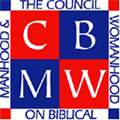Editor’s note: This following is the introduction to a report evaluating the gender language used in the 2011 edition of the NIV Bible. The report was produced and provided by the Council on Biblical Manhood and Womanhood (www.cbmw.org). To read the full report, you can download the pdf file by clicking on the link below.
Introduction
According to the Christian Booksellers Association, the NIV is the best-selling Bible in English-ahead of the King James Version, the New King James Version, the New Living translation, the English Standard Version, the New American Standard, and several others.[1]
 But now Zondervan, the publisher of the NIV, has issued a new edition, the 2011 NIV. This edition will replace the current NIV (the 1984 edition). What is this new edition like?
But now Zondervan, the publisher of the NIV, has issued a new edition, the 2011 NIV. This edition will replace the current NIV (the 1984 edition). What is this new edition like?
The last two attempts at revising the NIV were met with a great deal of controversy due to their use of a gender-neutral philosophy of translation.[2] The gender-neutral approach of the TNIV (Today’s New International Version) in 2002 and 2005 became such a lightning-rod that the version never caught on with American evangelicals and has now been discontinued.
The TNIV provoked a lively discussion among evangelical scholars and Bible readers about translation philosophy in general and about gender-neutral approaches in particular. In fact, the debate actually preceded the appearance of the TNIV because of rumors in the evangelical world that the NIV was going “gender-neutral.” That debate began in 1997 and extended through the mid-2000s. Many of the contested issues in that discussion remain unresolved.[3]
It is no surprise, therefore, that many evangelicals have been anticipating the release of the 2011 NIV. Readers want to see how this latest revision has resolved (or not resolved) points of contention about gender language that are left over from these previous discussions.
Does the 2011 NIV deserve the same prominence among evangelicals that the 1984 NIV has enjoyed for so many years? Or will 2011 NIV fall into disuse and go the way of the TNIV?
[1]The CBA’s rankings are available online at http://www.cbaonline.org/nm/documents/BSLs /Bible_Translations.pdf.
[2]The first attempt was the New International Version – Inclusive Language Edition (NIVI) in 1996 (released only in the UK), and the second was Today’s New International Version (TNIV) in 2005.
[3]See Mark L. Strauss, Distorting Scripture?: The Challenge of Bible Translation & Gender Accuracy (Downers Grove, IL: InterVarsity, 1998).; Glen G. Scorgie, Mark L. Strauss, and Steven M. Voth, eds., The Challenge of Bible Translation (Grand Rapids: Zondervan, 2003); Vern S. Poythress and WA Grudem, The Gender-Neutral Bible Controversy: Muting the Masculinity of God’s Words (Nashville, TN: Broadman & Holman, 2000); D. A. Carson, The Inclusive-Language Debate: A Plea for Realism (Grand Rapids: Baker, 1998); Vern S. Poythress and WA Grudem, The TNIV and the Gender-Neutral Bible Controversy (Nashville, TN: Broadman & Holman, 2004); Wayne Grudem and Jerry Thacker, Why Is My Choice of a Bible Translation So Important? (Louisville, KY: Council on Biblical Manhood and Womanhood, 2005).
